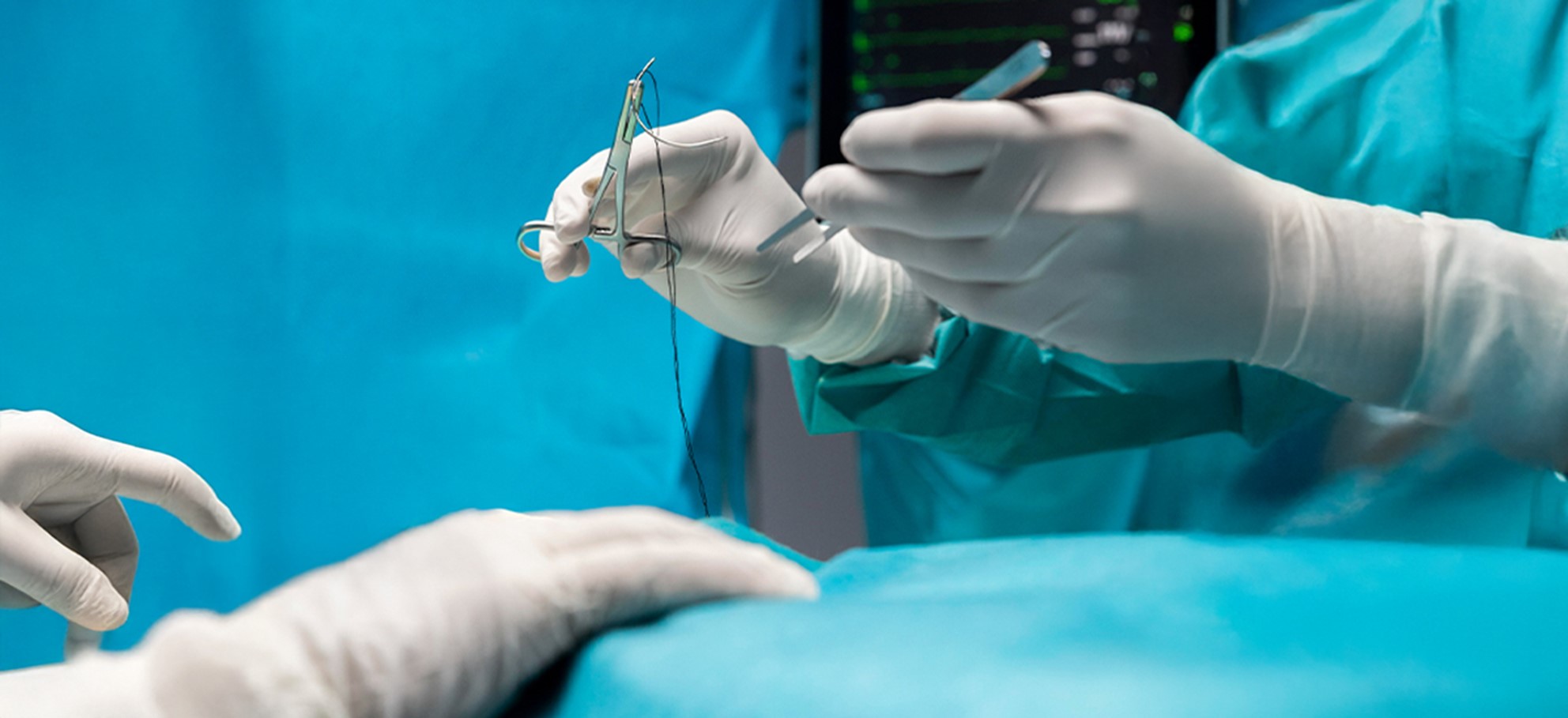Categories
Laparoscopic Myomectomy: Expert Overview of Benefits, Risks, and Recovery Timeline
May 05, 2025
Many women may not even
know they have fibroids, as they often cause no symptoms. However, in
some cases, they can lead to heavy menstrual bleeding, pelvic pain or
pressure, frequent urination, pain during intercourse, and even fertility
issues.
The exact cause of
fibroids is not fully understood, but they are believed to be influenced by hormones
(especially estrogen and progesterone) and genetic factors. They are
most common in women between the ages of 30 and 50 and may shrink after
menopause due to the drop in hormone levels.
Being diagnosed with
uterine fibroids can feel overwhelming, especially when they start interfering
with your daily comfort, fertility plans, or overall well-being.
Thanks to modern medical
advancements, uterine fibroids can now be easily addressed with laparoscopic
myomectomy, a minimally invasive, keyhole surgery. Meet our expert and best gynecologic surgeons at BirthRight by Rainbow Hospitals, who are
here to guide you through every step of your treatment with care, compassion,
and clinical excellence.
And here is your guide to
Laparoscopic Myomectomy.
What Is Laparoscopic Myomectomy?
Laparoscopic Myomectomy is a keyhole surgery that removes uterine
fibroids (noncancerous growths) while preserving the uterus. It is a
fertility-preserving procedure and is ideal for women who wish to have children
in the future or want to retain their uterus.
Unlike open surgery,
which requires a large abdominal incision, this procedure involves small
incisions, a tiny camera (laparoscope), and specialized instruments to excise
fibroids with minimal trauma to surrounding tissues safely.
Who Needs A Myomectomy?
Fibroids can vary in
size, number, and location. While many are asymptomatic, some can cause:
Ø Heavy or prolonged periods
Ø Pelvic pain or pressure
Ø Pain during intercourse
Ø Urinary or bowel issues
Ø Infertility or recurrent pregnancy loss
If fibroids are
significantly affecting your health or fertility, and medication has not
helped, your doctor may recommend myomectomy or fibroid removal surgery over a hysterectomy to preserve your uterus.
Your active participation
in this decision-making process is crucial, and our team at BirthRight by
Rainbow Hospitals is here to provide you with all the information and support
you need to make the best choice for your health.
Benefits of Laparoscopic Myomectomy
Compared to traditional
open surgery, laparoscopic myomectomy offers numerous advantages:
Minimally Invasive with Smaller Scars
In Laparoscopic
Myomectomy, the surgeon makes tiny keyhole-sized incisions to access the fibroids
instead of a large cut. It results in minimal scarring, reducing the
healing time and offering a more cosmetically pleasing outcome.
Faster Recovery Time
Most patients go home the
next day and return to normal activities in 1–2 weeks, as opposed to the 4–6
weeks with open surgery.
Less Pain and Blood Loss
Advanced techniques
reduce intraoperative bleeding and post-operative discomfort.
Fertility Preservation
By retaining the uterus,
this procedure supports future pregnancy planning for many women.
Lower Risk of Adhesions
Laparoscopic surgery lowers the risk of internal scarring, which can otherwise impact fertility.
Risks and Considerations
Like any surgical
procedure, laparoscopic myomectomy carries some risks, though they are
relatively rare, primarily when performed by skilled surgeons. Bleeding can
occur, particularly in cases involving significant or multiple fibroids. While
infection is uncommon, it remains a general risk with any surgery. Fibroid recurrence is possible over
time, which makes regular follow-up important.
In some cases, if
complications arise during the procedure, the surgeon may need to convert to an
open surgery to ensure safety and effectiveness. Our expert surgeons at
BirthRight by Rainbow Hospitals use advanced imaging and surgical precision to
minimize these risks and ensure optimal outcomes.
What To Expect After Surgery?
Immediately After Surgery
Ø You will be monitored in the recovery room for
a few hours.
Ø Most patients are discharged within 24 hours.
Ø You may experience mild cramping or soreness at the incision sites.
Week 1
Ø Rest and avoid strenuous activities.
Ø Light walking is encouraged to prevent blood
clots.
Ø Most women can resume basic daily activities
by the end of the week.
Weeks 2–4
Ø Return to work (desk jobs) and light exercise
is usually possible.
Ø Avoid heavy lifting or high-impact workouts.
After 4 Weeks
Ø You can resume regular routines.
Ø If you are planning a pregnancy, your doctor
may advise waiting 3 to 6 months to allow the uterus to heal fully.
Why Choose BirthRight by Rainbow Hospitals for Laparoscopic Myomectomy?
At BirthRight by Rainbow
Hospitals, we combine
state-of-the-art technology with highly experienced gynecologic surgeons to
provide safe, precise, and compassionate care. Our patient-first approach
ensures:
Ø Personalized treatment plans tailored to your
fertility goals.
Ø World-class facilities and post-operative
support.
Ø Minimally invasive expertise for quicker
healing and better outcomes.
Ø Emotional and psychological support for women
navigating gynecologic health concerns.
At BirthRight by Rainbow
Hospitals, we recognize that every woman’s health journey is personal and are
here to support yours with sensitivity and excellence. From the moment you walk
through our doors to your full recovery, our team is dedicated to providing you
with the highest quality care, tailored to your individual needs and goals.
When Should You Speak To A Specialist?
If you have been
diagnosed with fibroids and are experiencing symptoms or are planning a
pregnancy, it is essential to consult a specialist. Our team at BirthRight by Rainbow
Hospitals is here to provide expert guidance, second opinions, and
comprehensive care tailored to your needs.
To schedule an
appointment with our best gynecologists, call us today or visit our
official website.
FAQs:
1. What is laparoscopic myomectomy and how is it different from open fibroid removal surgery?
Laparoscopic myomectomy is a minimally invasive procedure used to remove uterine fibroids through tiny “keyhole” incisions. Unlike traditional open surgery, which requires a large abdominal cut, this technique uses a thin camera (laparoscope) and small instruments. It usually leads to less pain, smaller scars, faster healing, and a quicker return to daily life.
2. Can I get pregnant after a laparoscopic
myomectomy?
Yes, many
women go on to have successful pregnancies after laparoscopic fibroid
removal surgery. In fact, this procedure is often done to help improve
fertility outcomes. However, your uterus needs time to heal. Doctors typically
recommend waiting 3 to 6 months before trying to conceive. We’ll support
you with personalised advice and care at every step of your fertility journey.
3.
Is
laparoscopic myomectomy safe, and what are the risks?
Yes, when performed by skilled surgeons—like
our team at BirthRight by Rainbow Hospitals—laparoscopic myomectomy is
considered safe and effective. As with any surgery, there are risks such as
bleeding, infection, or the rare need to convert to open surgery. There’s also
a possibility that fibroids could return later. However, our advanced
techniques and post-operative care significantly reduce complications and
promote faster recovery.











